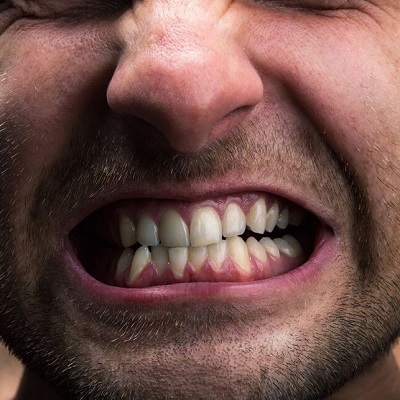What Types of Tooth Fillings Are Available in Dubai?

Strong 8k brings an ultra-HD IPTV experience to your living room and your pocket.
In Dubai, where dental care is advanced and diverse, patients have access to a wide range of tooth filling materials designed to meet various needs, from durability to aesthetics. Each type of filling has unique properties and benefits, allowing patients to choose the best option based on their specific requirements. Here’s a detailed overview of the types of Tooth Filling Clinic Dubai:
1. Composite Resin Fillings
Description: Composite resin fillings are made from a mixture of plastic and fine glass particles. They are designed to blend seamlessly with the natural color of your teeth.
Benefits:
Aesthetic Appeal: They can be matched to the color of your natural teeth, making them ideal for visible areas.
Bonding: Composite resins bond directly to the tooth structure, which can help support and strengthen the tooth.
Versatility: Suitable for both front and back teeth, though they are most commonly used in visible areas.
Considerations:
Durability: While durable, composite fillings may wear out faster than some other types of fillings and may need to be replaced more frequently.
Cost: Generally more expensive than amalgam fillings.
2. Amalgam Fillings
Description: Amalgam fillings are made from a blend of metals, including silver, mercury, tin, and copper. They are known for their durability and strength.
Benefits:
Durability: Highly resistant to wear and pressure, making them suitable for back teeth where chewing forces are greatest.
Cost-Effective: Typically less expensive than composite or ceramic fillings.
Considerations:
Aesthetic Discreteness: Silver-colored amalgam fillings are more noticeable and are less preferred for visible areas.
Material Composition: Contains mercury, which some patients may want to avoid for personal reasons.
3. Ceramic Fillings
Description: Ceramic fillings, also known as porcelain fillings, are made from high-quality ceramic materials that closely match the appearance of natural teeth.
Benefits:
Aesthetic Appeal: Offers a natural look and is less noticeable compared to amalgam.
Stain Resistance: Highly resistant to staining, maintaining their appearance over time.
Durability: Strong and durable, suitable for both front and back teeth.
Considerations:
Cost: Generally more expensive than composite and amalgam fillings.
Procedure: May require more time to prepare and place due to the need for custom fitting.
4. Glass Ionomer Fillings
Description: Glass ionomer fillings are made from a mixture of glass and an organic acid. They release fluoride, which helps protect the tooth from further decay.
Benefits:
Fluoride Release: Helps in the protection of the tooth structure and surrounding areas.
Suitable for Certain Areas: Often used for fillings below the gum line or in areas where esthetics are less critical.
Considerations:
Durability: Generally less durable than composite and amalgam fillings, making them more suitable for areas with less chewing pressure.
Appearance: Not as aesthetic as composite or ceramic fillings.
5. Resilon Fillings
Description: Resilon is a thermoplastic root canal filling material that is used in endodontic therapy. It is not a traditional filling material but is used to fill the space within a root canal.
Benefits:
Sealing: Provides an excellent seal to prevent reinfection of the root canal.
Flexibility: Can be adapted to the shape of the root canal, improving the long-term success of the treatment.
Considerations:
Specific Use: Primarily used in root canal therapy rather than for general fillings.
6. Dental Sealants
Description: Dental sealants are thin, protective coatings applied to the chewing surfaces of the back teeth (molars) to prevent cavities.
Benefits:
Preventive Care: Provides a barrier against bacteria and food particles, reducing the risk of decay.
Application: Typically used on teeth that are more susceptible to cavities, especially in children and adolescents.
Considerations:
Not a Replacement: Sealants are used in addition to regular fillings, not as a substitute.
FAQs About Tooth Filling Types
1. Which filling type is best for front teeth?
Composite resin or ceramic fillings are typically preferred for front teeth due to their aesthetic qualities and ability to blend with natural tooth color.
2. Are amalgam fillings safe?
Yes, amalgam fillings are considered safe and durable. Concerns about mercury content are addressed by regulatory bodies, and the material has been used for many years.
3. How long do ceramic fillings last?
Ceramic fillings are known for their durability and can last 10-15 years or more with proper care.
4. Can I eat normally after getting a filling?
Yes, but it’s advisable to avoid very hard or sticky foods immediately after getting a filling to allow it to set properly.
5. Are there any specific care instructions for different types of fillings?
Yes, while general oral hygiene practices apply, specific care may vary based on the type of filling. For example, avoiding staining foods may be more critical for composite fillings.
Conclusion
Dubai offers a variety of tooth filling options to suit different needs, from aesthetic concerns to durability and cost. Understanding the types of fillings available and their respective benefits and considerations can help you make informed decisions about your dental care. Consulting with a qualified dentist in Dubai can further guide you in selecting the best filling material for your individual requirements, ensuring a healthy and attractive smile.
Note: IndiBlogHub features both user-submitted and editorial content. We do not verify third-party contributions. Read our Disclaimer and Privacy Policyfor details.







